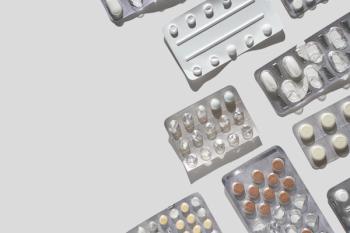
Diabetes, specialty drugs continue to drive growth in drug spending
For the fourth consecutive year, diabetes therapy topped the list of contributors to drug use trends in therapeutic categories, contributing 16.1% to overall growth in drug spending in 2010 due to an increasing number of patients, according to the recently released 2011 Medco Drug Trend Report, which tracks utilization and spending.
For the fourth consecutive year, diabetes therapy topped the list of contributors to drug use trends in therapeutic categories, contributing 16.7% to overall growth in drug spending in 2010 due to an increasing number of patients. In addition, last year specialty drugs accounted for 70% of spending growth and represented 18.1% of all pharmacy benefit plan spending, according to the recently released 2011 Medco Drug Trend Report, which tracks utilization and spending.
Approximately 25.8 million Americans had diabetes in 2010, 8.3% of the U.S. population, according to the Centers for Disease Control and Prevention. Among residents who were 65 years or older, 10.9 million (26.9%) had diabetes last year and another 1.9 million who were 20 years or older were newly diagnosed with the disease. Also, in 2005 to 2008, 35% of U.S. adults were considered prediabetic. It has been estimated that by 2020, 52% of Americans will have the disease or be prediabetic, and the health spending associated with these conditions will reach $500 billion, according to a UnitedHealth Group study.
Within the diabetes category, insulin therapies accounted for 36% of plan costs and 63% of growth in drug spend. Diabetes was the fifth-highest driver of drug use in 2010, according to the Medco Health Solutions report.
“Demand for these diabetes drugs as a category remains unabated as America struggles with what has become a worldwide epidemic,” said Dr. Glen Stettin, Medco Health Solutions chief medical officer. “The number of people in the U.S. being treated for diabetes is expected to increase from nearly 25 million today to 44 million by 2035. Lifestyle changes, especially diet and exercise, need to be emphasized in order to address the financial and healthcare burden brought about by this disease.”
The category of respiratory drugs contributed 15.1% to overall growth in drug spending in 2010, making it the number 2 trend driver. While the proportion of Medco members who took asthma and COPD medications decreased, those who took the medication received more days of therapy. Generic budesonide was the top contributor to trend in this category.
The category of rheumatological drugs for treating rheumatoid arthritis, lupus, Crohn’s disease, ulcerative colitis, and other autoimmune diseases is largely made up of specialty drugs and contributed 14.7% to overall drug spending last year. Enbrel and Humira accounted for 86% of drug spend in this category. For the second consecutive year, the rheumatological category reached double-digit growth in usage (13.2%), while cost-per-day growth remained low (0.7%).
The demand for oncology specialty drugs has increased 6.7%, according to the report by Medco Health Solutions. The drug trend for specialty cancer treatments reached 21.1%, primarily because of unit cost increases of almost 14%.
“New cancer drugs reaching the market are expected to double during the next several years, with approximately 50% of biotech drugs in the pipeline being oncologic,” said Dr. Stettin. “Early diagnosis, evidence-based treatment, and enhanced coordination of care have essentially turned some forms of the condition into chronic illnesses that can be managed longer-term.”
Oncology drug price inflation climbed to 11.5% last year with the use of many newly introduced specialty drugs that have reached the market. Higher prescribing rates for newer treatments such as Revlimid for multiple myeloma and Gleevec for chronic leukemia and gastrointestinal stromal tumors contributed to increased growth spending. More than 90% of anticancer drugs approved since 2004 cost $20,000 over a 12-week treatment period. Many of the newer treatments are oral or can be self-administered for delivery at home instead of the physician’s office.
“The emergence of biosimilar drugs will help mitigate some of the costs of specialty drugs, when they start to reach the marketplace in or around 2013,” Dr. Stettin said. “We are already working with employers and other health plan providers to prepare for these fast-approaching future trends.”
Biosimilar drugs are expected to be developed over the next 10 years for the U.S. market in the following therapeutic areas: rheumatoid arthritis, multiple sclerosis, growth hormone deficiency, diabetes, and anemia.
“Biosimilars will help with cost containment, with approximately 40% to 60% anticipated savings depending on the drug within a certain class being developed. Approximately $340 billion will be saved over a 10-year period so long as the manufacturers [of biosimilars] are able to show interchangeability,” said Medco Health Solutions Chairman and CEO David Snow.
Generic drug spending helped to keep prescription drug spending growth below 4% last year, according to the Medco Health Solutions report. More than 71% of prescription drugs dispensed were generics last year. Generics had a limited inflation rate of 0.5% and helped to control overall prescription drug costs during 2010. Drug use increased 2.1%, which is the highest rate of growth since 2005, when it increased 2.7%.
Newsletter
Pharmacy practice is always changing. Stay ahead of the curve with the Drug Topics newsletter and get the latest drug information, industry trends, and patient care tips.











































































































































































































